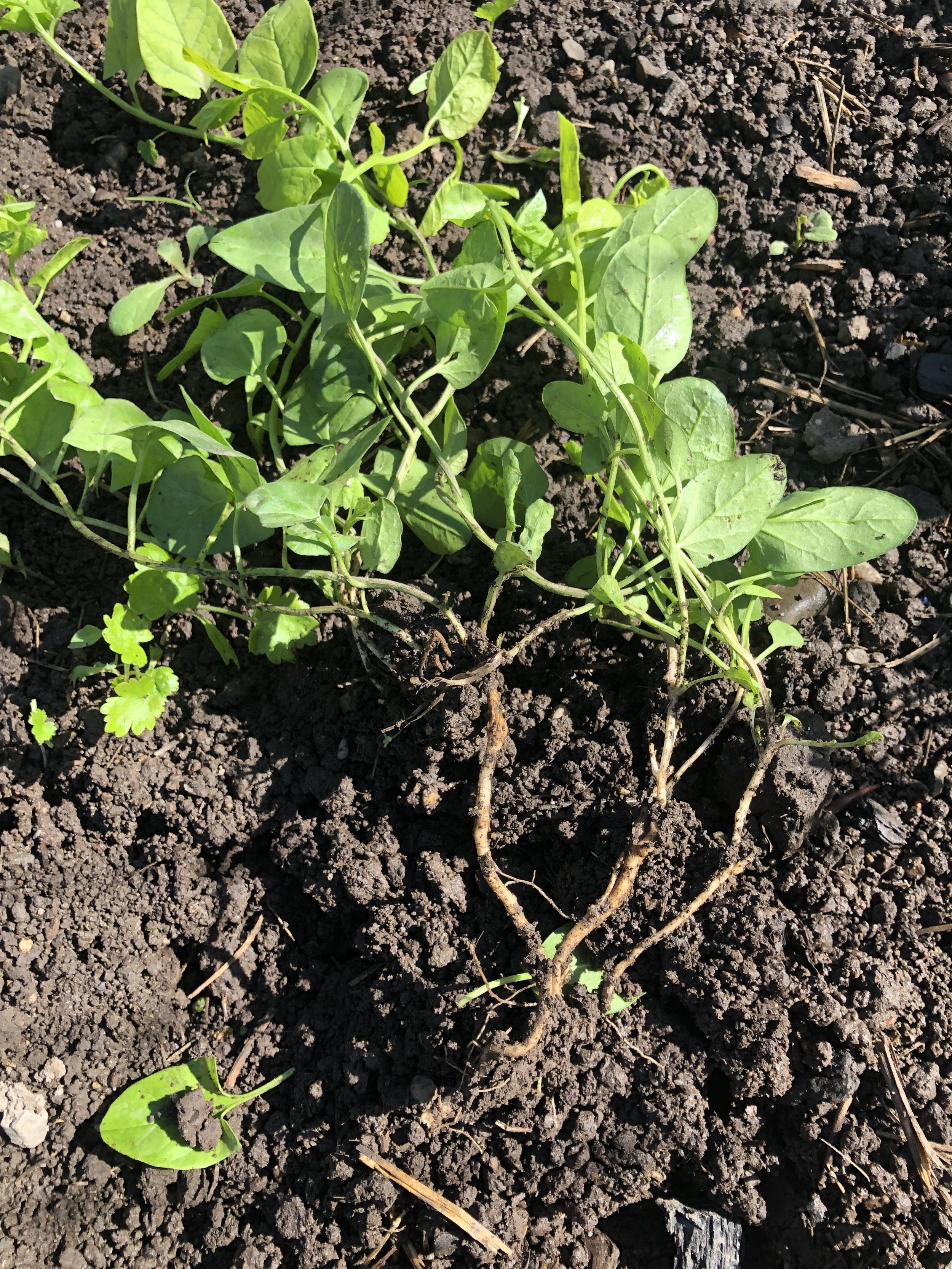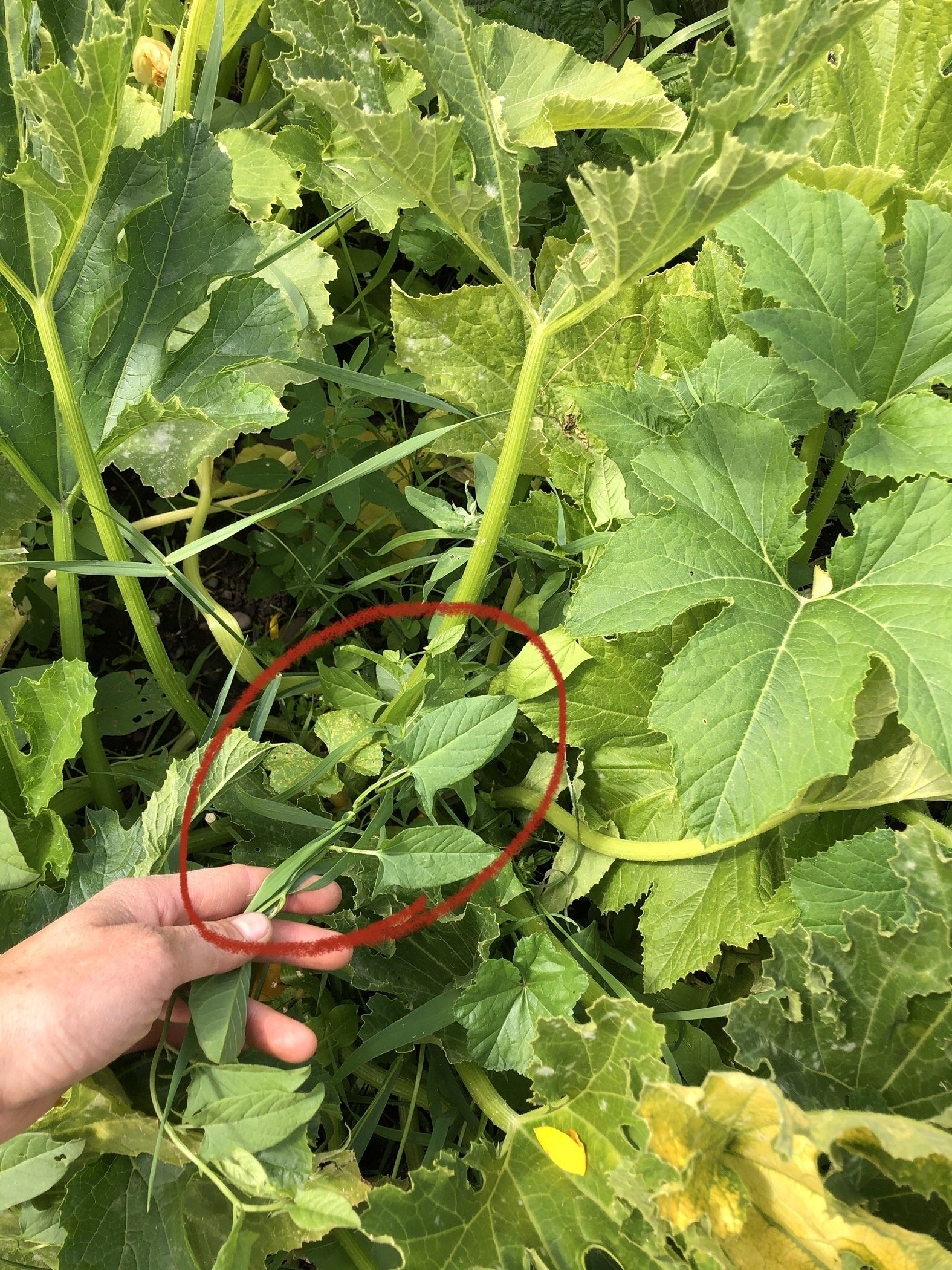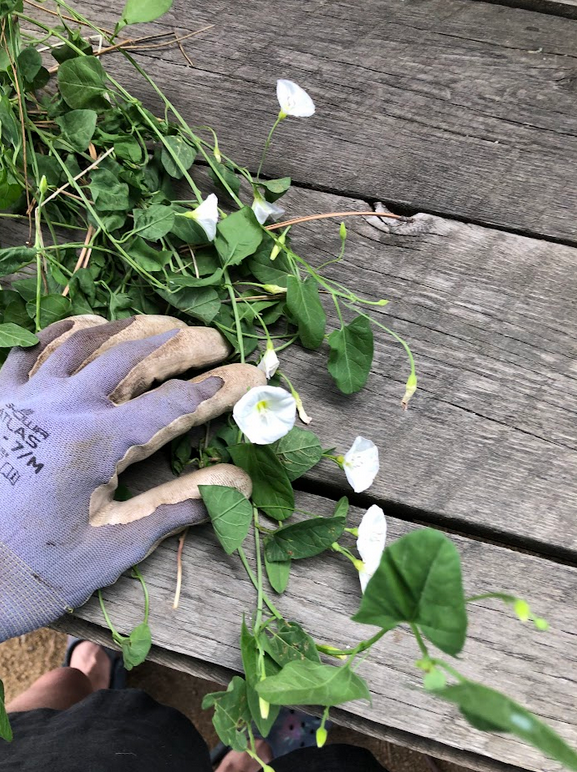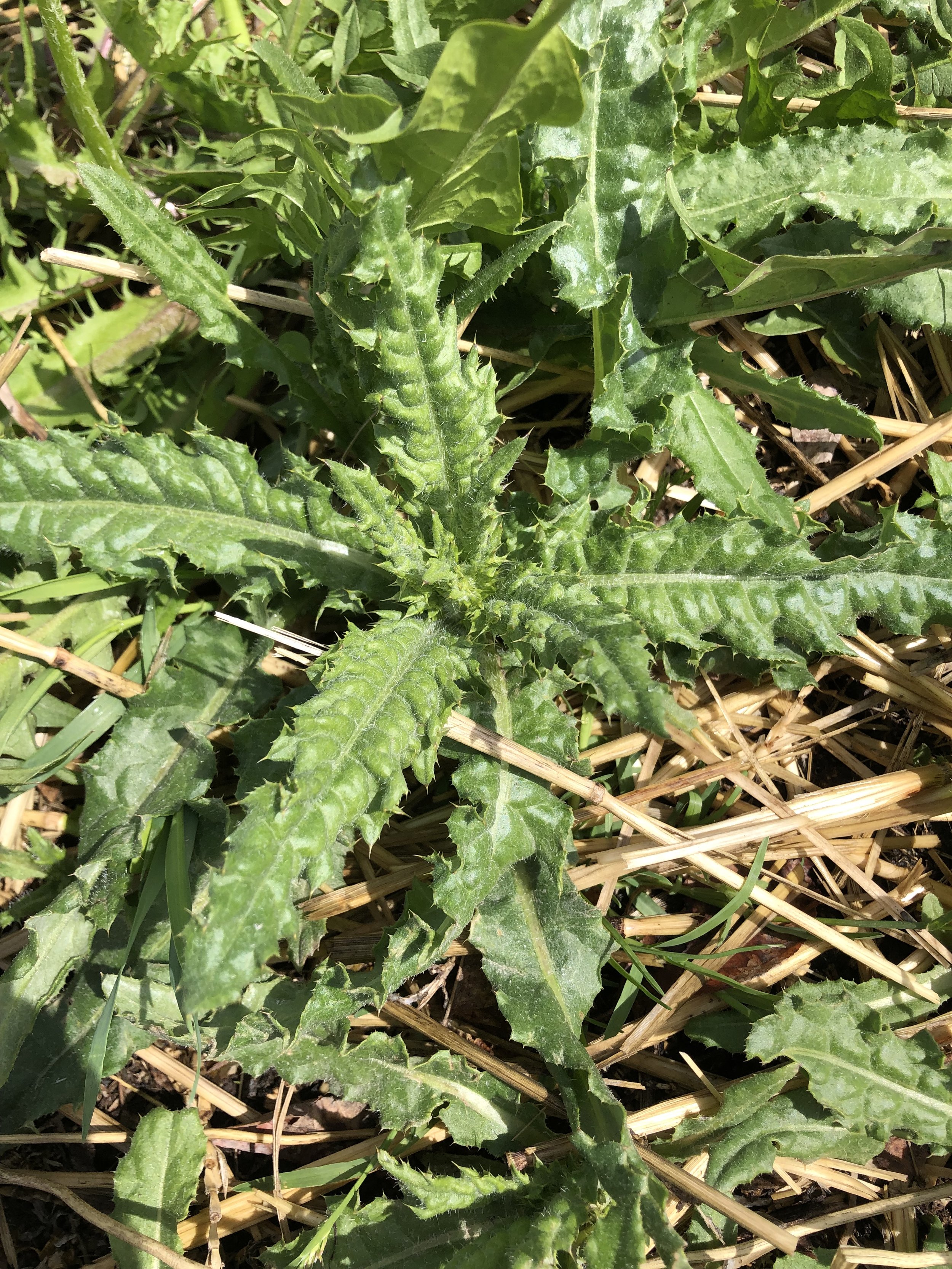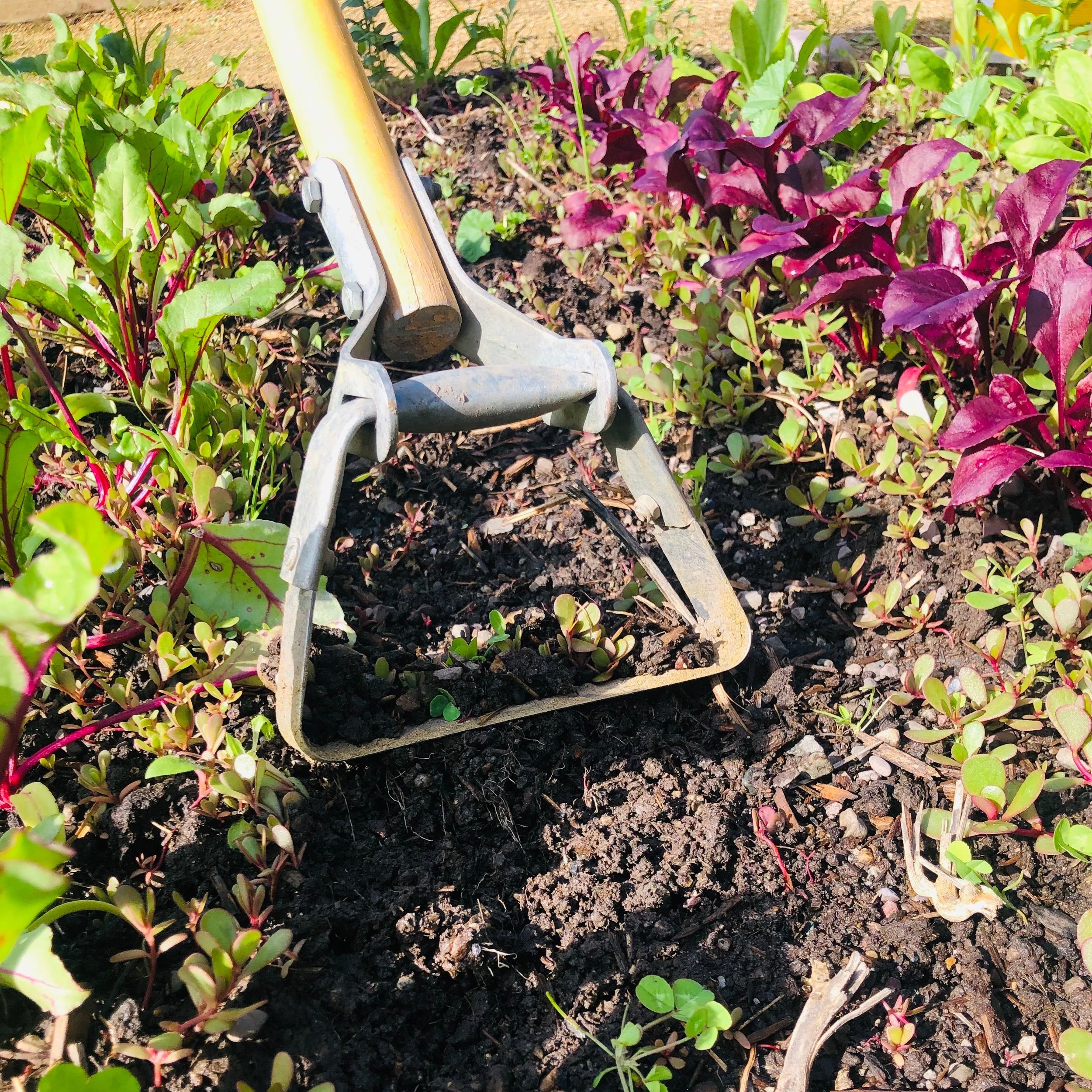Roots Off Reserve Community Garden Orientation
Hello and welcome to the Roots Off Reserve Community Garden!
Finished in 2020, this garden features individual hose bibs, rock pathways, wood edged beds, 8 ADA-accessible raised beds, a communal raspberry patch, and native plants around the perimeter. (For more information on the other nine community gardens, click here.) Please read all of the important information below and watch the virtual video tour (link below), so you are familiar with your garden’s amenities and resources. We hope that with an understanding of all the pieces that make up this garden site, you will help us care for it and keep it functioning and thriving for the benefit of everyone.
Water and irrigation
Water will be turned on for the season by the end of April and turned off in mid-October. During the growing season, water will automatically turn off every night between 9 pm and 6 am, so there is enough water pressure to water the adjacent lawn. Please plan accordingly!
Unlike most of our other garden sites, each garden plot at this garden has its own hose bib. This allows gardeners the flexibility to install their own drip irrigation system, sprinkler, or timer (oh boy!). Garden City Harvest does not provide these resources, so you’ll have to purchase them on your own to customize your plot’s irrigation system. (Note: If you buy special watering equipment, please store them at home instead of the garden shed. Shed space is limited and they may become communal.) There are a couple communal hoses and sprinkler heads for gardeners to use and share. Please coil them up and return them to the shed when done.
Water Conservation
Sometimes when people set up automatic watering or timers, they set it and forget it. Please note! It’s important to check your watering schedule and your garden soil regularly so you can adjust it as the season changes. In the past this garden has experienced a lot of overwatering, which not only wastes water, but also floods pathways and increases mold and algae growth in plots and pathways. It’s not healthy for your crops either! For more information about watering effectively, read this blog or ask staff.
If there is suddenly no water between the expected hours (6 am - 9 pm), contact Community Gardens Staff. Don’t forget to post about the water issue on the garden’s Facebook group, so other gardeners know.
GARDEN SHED AND COMMUNAL TOOLS
Upon entering the garden, one of the first things you’ll notice is the garden shed. The shed’s combination is in the orientation email you just received. Inside the shed, you’ll find communal garden tools and wheelbarrows for use at the garden. On the right inside side of the shed is contact information for Garden City Harvest staff and your garden’s leadership committee (amazing fellow gardeners who volunteer their time to help you and Garden City Harvest staff!) A first-aid kit, important safety information, and other documents will be inside here too.
Flyers about upcoming garden events or other important notices will be posted on a bulletin board on the outside of the shed. Often, the leadership committee will write tasks that need done at the garden that can go towards your three service hours.
On the shelves inside the shed, you’ll find resources on gardening, a recipe card box to log your three service hours, and free seeds.
Behind the shed, you’ll find tomato cages and trellising material for your use.
Remember, all gardeners are required to fill at least three service hours helping to maintain the greater community garden and communal areas.
Make sure to read the “Communal Areas” section at the bottom of the blog for ideas on how to fill these hours…
soil amendments
Compost
This garden has a “house” compost system made out of pallets next to the shed. This is for vegetable scraps from your garden and kitchen. DO NOT ADD WEEDS, FIBROUS PLANT STALKS, ANIMAL PRODUCTS, PAPER PRODUCTS, TRASH OR COMMERCIAL-GRADE COMPOSTABLE ITEMS. These items will not break down in our simple bin system.
All inputs start at the farthest left bin and are turned (moved with a digging fork or shovel) to the next bin as they break down to make room for fresh scraps! The decomposed compost in the farthest right bin is good to use in your garden - help yourself! Keep in mind, this compost system doesn’t break down on its own. It requires time, water, and attention. If the compost starts to smell, it either doesn't have enough carbon (straw) or it needs to be turned (which gives it oxygen and reduces the smell). During the hot summer months, the compost needs to be watered frequently (every day or every other day.)
Manure
Garden City Harvest brings in composted manure every spring for community gardeners to help supplement their garden soil. Each garden plot is allotted two 5-gallon buckets of manure each spring. Gardeners are also encouraged to build their own soil by bringing in other amendments as long as they don’t have chemicals, synthetic fertilizers or bio solids (treated sewage). Check out our Sustainable Growing Guidelines for more information.
Straw
You might find straw bales from last fall near the shed. These are for community gardener use as well. We recommend you use straw only for mulching garlic and overwintering crops. Unfortunately, due to rising prices of straw and diminishing local sources, Garden City Harvest cannot provide every gardener with straw and ask those who have the means to purchase your own straw in the fall. If you do use the straw we provide, please limit your use to 1/2 bale per plot. We also strongly encourage you to use leaves if you have them available as they are a great mulch for your overwintering soil. Straw can be found at Ace Hardware, Murdochs, CHS Mountain West Co-op, and local nurseries.
Please place used straw that you rake off your plot next to the compost bins to be mixed in with the vegetable scraps.
WEED PILE
Weeds must be separated from other garden waste and placed in designated weed pile near the drive-in gate and compost bins. DO NOT put weeds in the house compost system! Stalky plants (i.e. sunflower, corn, kale or Brussels sprout stalks that take a long time to decompose) also go in the designated weed pile. Scroll down for tips on weed identification and removal.
Please take the time to separate your house-compostable garden materials from the weeds and stalks, and absolutely no dumping of personal home yard or garden waste is allowed. Do not add straw, soil, potted plants, plastic, leaves or any other yard waste to the weed pile. The weed pile is manually removed by Garden City Harvest staff throughout the season and taken to the City compost facility, and these items make it extremely difficult to move by hand. The compost facility may also reject the entire pile.
ROCK PILE
Our garden soil is full of rocks from Glacial Lake Missoula. Please put all rocks that you pull out of your garden plot in the designated rock pile that looks like the image on the right. DO NOT THROW ROCKS IN THE PATHWAYS. They can be a hazard. Keep in mind that by keeping small rocks in your garden soil, you are providing habitat for beneficial bugs and soil life.
COMMUNAL AREAS
There are several communal areas and resources in the garden that need your help. Many of these will benefit you and your garden. Additionally, the Roots off Reserve Community Garden is located adjacent to public green space and many homes, so it is important to be respectful tenants and neighbors. Below is a list of things that all community gardeners are collectively responsible for. Please do your part by chipping in those three service hours (or more) with these tasks.
Weeding: The pathways and areas around the fence, picnic table, shed, ADA raised beds, and compost needs weeding. Gardeners are also responsible for weeding the pathways immediately along the north and east side of their plot.
Compost: When the compost gets stinky or full, move each pile to the right (See the compost section above for more info). During the summer months water it frequently (every day or every other day) so that it stays moist to the touch.
Community berry and native plants: Located along the north and west fence lines, you’ll find some raspberries, currants, and native perennial plants (planted in fall 2020). Help us water and weed these areas, so they grow to become lush and productive! Once the raspberries and currants are fruiting, feel free to enjoy a handful when ripe!
Tool shed: Help us keep it clean and tidy. Occasionally, it will need to be organized and swept out.
Trash: The rule is pack it in and pack it out, but inevitably trash ends up blowing around the garden. Spend a couple minutes helping us pick up trash around the garden site.
Need more ideas? Contact your leadership committee - contact info in the shed!
Most wanted weeds
Weeding is a fundamental part of gardening and should be done weekly. If you keep up with it using a hoop (hula) hoe, it should take no more than an hour a week to keep your plot clear of most weeds. If you choose to weed less often, the task will get exponentially more difficult, and you will be on your hands and knees digging out weeds. Keep your eyes out for notices about weeds throughout the growing season. Watch the video tutorials and look at the photos below for weeding tips, and if you have any questions about weeds, please ask!
While there are many garden weeds, we have three problem plants on the site - quack grass, bindweed, and thistles. A fourth weed, purslane, is common but not as disastrous. All of these weeds should be placed in the weed pile, after you make sure to shake out any clumps of dirt.
Quackgrass
Quackgrass is grass with white, wire like roots and should be added to the weed pile. Make sure you shake out any clumps of dirt first.
Try weeding larger patches of quack grass using a digging fork.
Be careful to remove the long roots of quack grass using a trowel or digging knife.
Bindweed
Bindweed is a perennial that is very sneaky. We want you to be able to ID it before it flowers and weed it out. It has arrow-shaped leaves, white flowers, and vines around anything nearby. Put bindweed in the weed pile.
Bindweed can be tricky to spot! The middle photo shows some bindweed hiding in a squash patch. Never let bindweed flower.
Thistle
Thistles are prickly and have long taproots. Their flowers are pinkish-purple. Use a digging fork or trowel to remove the whole taproot, and be sure to wear gloves! See photo below.
Purslane
Purslane is a succulent and grows as a branching, spreading mat over the ground. We recommend using a hula hoe to uproot the purslane when the plants are still very small.
Below: a thistle; purslane growing around some beets; a hula hoe being used to weed out small purslane.





